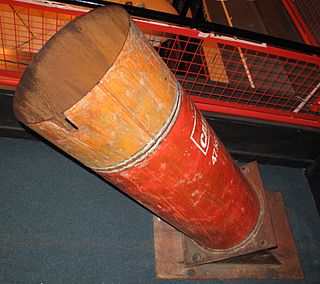
The East Tyrone Brigade of the Provisional Irish Republican Army (IRA), also known as the Tyrone/Monaghan Brigade was one of the most active republican paramilitary groups in Northern Ireland during "the Troubles". It is believed to have drawn its membership from across the eastern side of County Tyrone as well as north County Monaghan and south County Londonderry.
This is a chronology of activities by the Provisional Irish Republican Army (IRA) from 1970 to 1979.
Pádraig Oliver McKearney was a Provisional Irish Republican Army (IRA) paramilitary. He was killed during a British Army ambush at Loughgall, County Armagh in May 1987, aged 32. He had 15 years of service as an IRA Volunteer when he was shot dead at Loughgall, making him one of the most experienced IRA Volunteers ever killed by British forces.

From 1969 until 1997, the Provisional Irish Republican Army (IRA) conducted an armed paramilitary campaign primarily in Northern Ireland and England, aimed at ending British rule in Northern Ireland in order to create a united Ireland.
The Troubles in Bessbrook recounts incidents during and the effects of the Troubles in Bessbrook, County Armagh, Northern Ireland.
The Troubles in Ballygawley recounts incidents during The Troubles in Ballygawley, County Tyrone, Northern Ireland.

Barrack buster is the colloquial name given to several improvised mortars, developed in the 1990s by the engineering unit of the Provisional Irish Republican Army (IRA).
On 7 December 1985 the Provisional Irish Republican Army (IRA) attacked the Royal Ulster Constabulary (RUC) base at Ballygawley, County Tyrone. Two RUC officers were shot dead and the base was raked with gunfire before being destroyed by a bomb, which wounded a further three officers.
The Ballygawley bus bombing was a roadside bomb attack by the Provisional Irish Republican Army (IRA) on a bus carrying British soldiers in Northern Ireland. It occurred in the early hours of 20 August 1988 in the townland of Curr near Ballygawley, County Tyrone. The attack killed eight soldiers and wounded 28. In the wake of the bombing, the British Army began ferrying its troops in and out of County Tyrone by helicopter.
This is a chronology of activities by the Provisional Irish Republican Army (IRA) from 1980 to 1989. For actions before and after this period see Chronology of Provisional Irish Republican Army actions.

The Mullacreevie ambush took place on 1 March 1991, when a mobile patrol of the Ulster Defence Regiment composed of two Land Rover vehicles was attacked with an improvised horizontal mortar by a Provisional IRA active service unit from the North Armagh Brigade while passing near Mullacreevie housing estate, on the west side of Armagh City. One member of the UDR was killed instantly when the leading Land Rover was hit, while another died of wounds two days later. Two other soldiers were maimed for life.

In the Ballygawley land mine attack of 13 July 1983, four soldiers of the British Army's Ulster Defence Regiment (UDR) were killed by a Provisional Irish Republican Army (IRA) land mine near Ballygawley in County Tyrone, Northern Ireland. The soldiers were travelling in a convoy of armoured vehicles when the land mine was detonated remotely.
On 9 April 1990, the South Down Brigade of the Provisional Irish Republican Army (IRA) detonated a massive improvised land mine under a British Army convoy outside Downpatrick, County Down, Northern Ireland. Four soldiers of the Ulster Defence Regiment (UDR) were killed, the regiment's greatest loss of life since 1983.
In the Altnaveigh landmine attack of 19 May 1981, five British soldiers were killed and their armoured vehicle destroyed by a Provisional IRA landmine at Altnaveigh, a rural area outside Newry in County Armagh, Northern Ireland. The landmine was detonated remotely when the vehicle passed over it. The attack happened during a period of heightened tension over the 1981 Irish hunger strike.
On 17 July 1975 the South Armagh Brigade of the Provisional Irish Republican Army (IRA) detonated an improvised bomb inside a beer keg when it was being investigated by British Army soldiers. Four soldiers were killed and another seriously injured. This was the first major breach in the truce negotiated by the IRA and British government in February 1975. The attack took place in Forkhill, County Armagh. It was one of many such attacks by the IRA in the 1970s.
Declan Arthurs was a Volunteer in the Provisional IRA's East Tyrone Brigade in the mid-1980s. He was killed in the Loughgall ambush, after bombing an RUC base.

Throughout the protracted conflict in Northern Ireland (1960s-1998), the Provisional IRA developed a series of improvised mortars to attack British Army and Royal Ulster Constabulary (RUC) security bases. The organisation also purchased both light and heavy machine guns in order to hamper the British Army supply of border bases by helicopter. The IRA fitted vehicles, specially vans and trucks, with both types of weapons. Vans, trucks and tractors were modified to transport concealed improvised mortars to a launch area near the intended target and fire them, while light and heavy trucks were employed as firing platforms mounting machine guns, particularly M60s and DShKs. Improvised armoured vehicles and heavy equipment were also used to penetrate the perimeter of fortified security bases. The IRA vehicles were often disguised as belonging to civilian companies or even government agencies.
On 24 June 1972, in the rural townland of Crabarkey near Dungiven, the Provisional IRA detonated an improvised land mine, killing three British Army soldiers in a Land Rover. It was one of many such landmine attacks by the IRA in rural areas in the 1970s.
On 10 September 1972, a active service unit (ASU) of the Provisional IRA's East Tyrone Brigade carried out a landmine attack against a British Army mobile patrol, along a small road in the rural village of Sanaghanroe near the town of Dungannon in County Tyrone.






